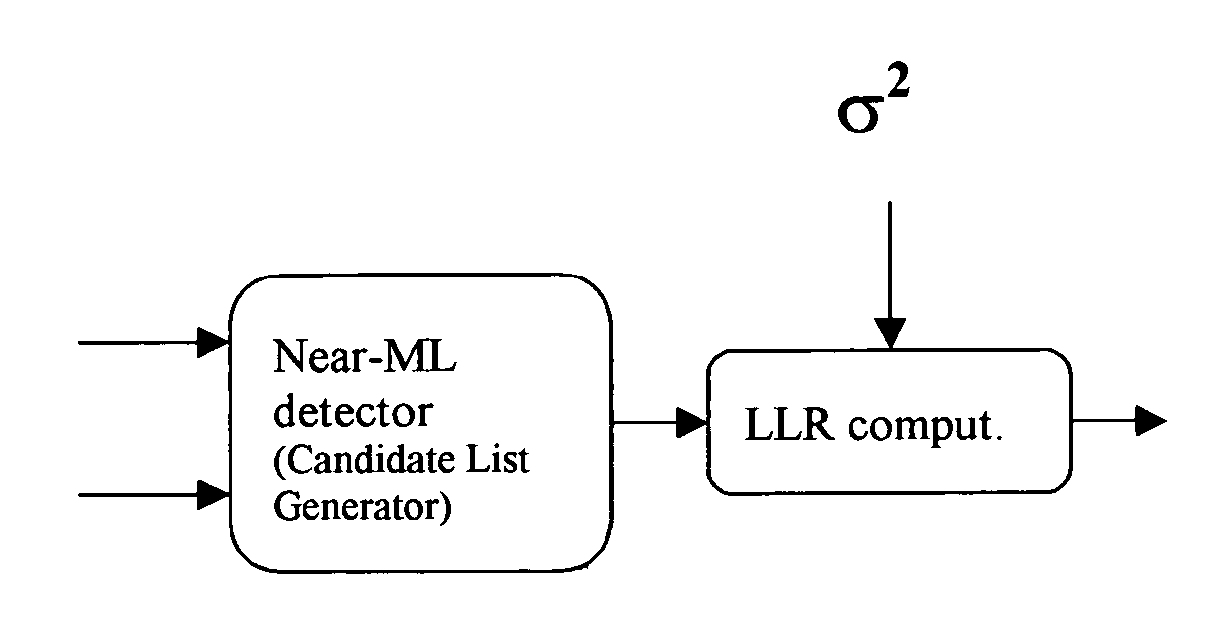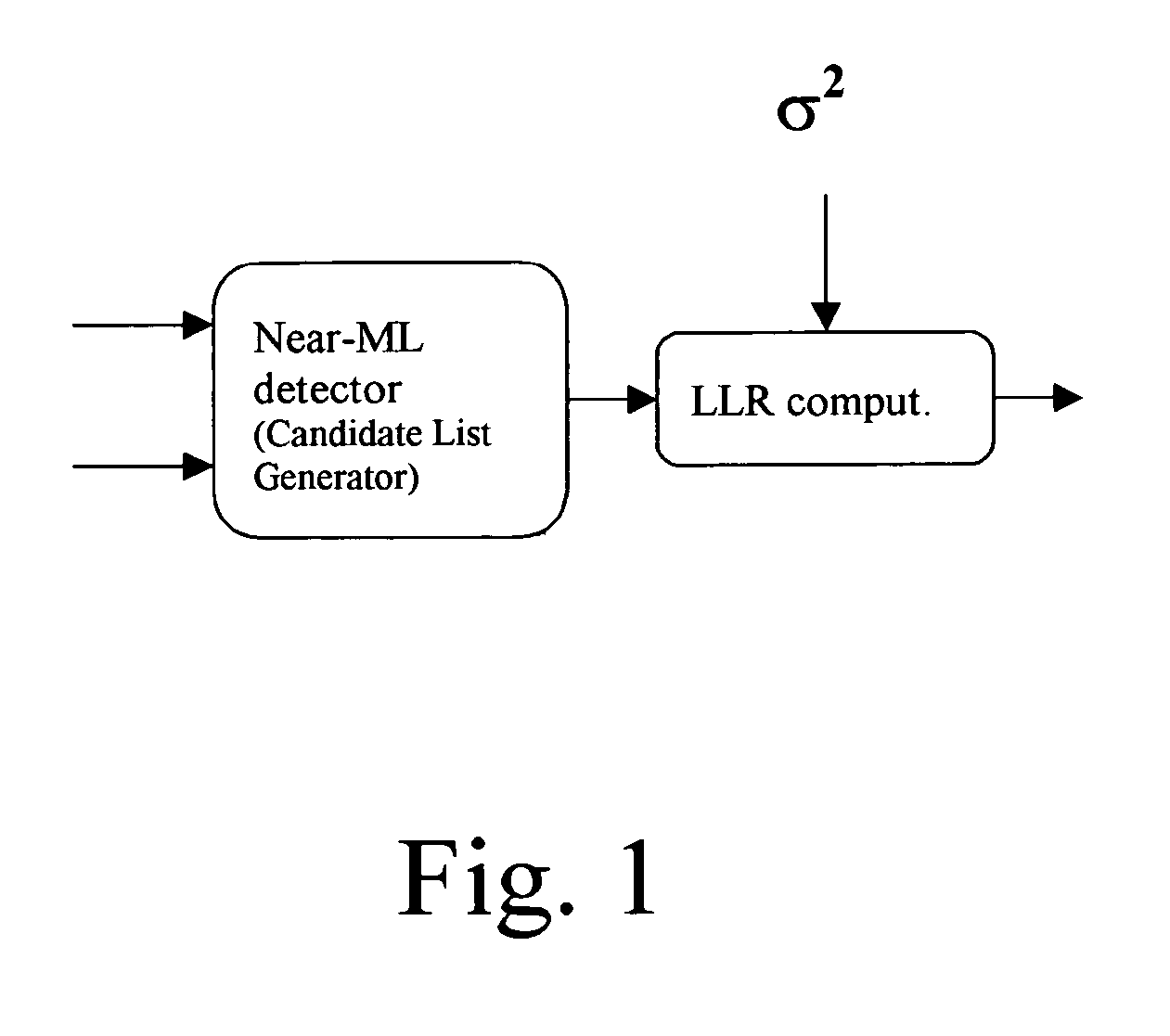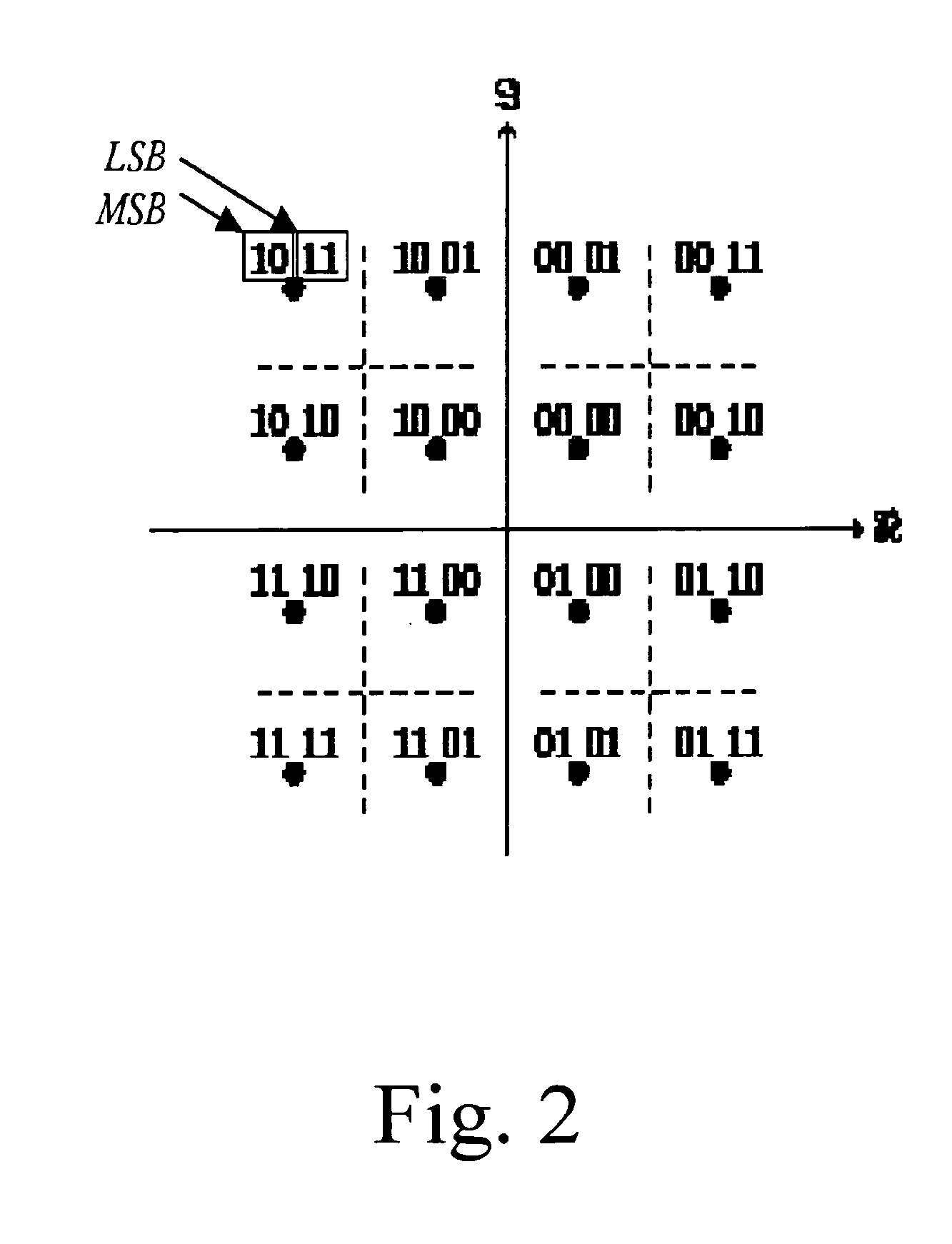Process for Performing Log-Likelihood-Ratio Clipping in a Soft-Decision Near-ML Detector, and Detector for Doing the Same
a detector and log-likelihood ratio technology, applied in the field of wireless communication, can solve the problems of poor performance and performance decline, and achieve the effect of limiting the complexity and near-optimal bit-wise detection performan
- Summary
- Abstract
- Description
- Claims
- Application Information
AI Technical Summary
Benefits of technology
Problems solved by technology
Method used
Image
Examples
Embodiment Construction
[0045]There will now be described a process which enhances the LLR computation by means of an improved clipping selection mechanism.
[0046]The invention is particularly suitable for a MIMO soft-decision near-ML detector that can be used in an Orthogonal Frequency Division Multiplexing (OFDM).
[0047]However, it should be clear that the process and mechanism described below will be applicable to any other kind of modulation.
[0048]For the sake of clarity, the example of the 16 Quadrature Amplitude Modulation (QAM) will be considered but, again, the skilled man will straightforwardly apply the principles underlying in the process below to any other type of modulation, such as a 64QAM for instance.
[0049]As shown in FIG. 2, the 16QAM is based on a constellation plane defined by a horizontal axis representing the real portions and a vertical axis representing the imaginary portions. Accordingly, the constellation plane is divided into four quadrants, each quadrant including four symbols.
[005...
PUM
 Login to View More
Login to View More Abstract
Description
Claims
Application Information
 Login to View More
Login to View More - R&D
- Intellectual Property
- Life Sciences
- Materials
- Tech Scout
- Unparalleled Data Quality
- Higher Quality Content
- 60% Fewer Hallucinations
Browse by: Latest US Patents, China's latest patents, Technical Efficacy Thesaurus, Application Domain, Technology Topic, Popular Technical Reports.
© 2025 PatSnap. All rights reserved.Legal|Privacy policy|Modern Slavery Act Transparency Statement|Sitemap|About US| Contact US: help@patsnap.com



